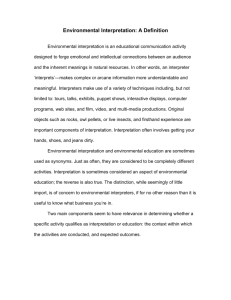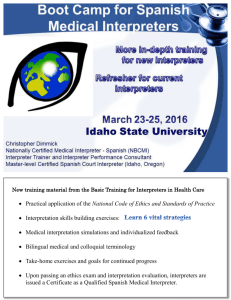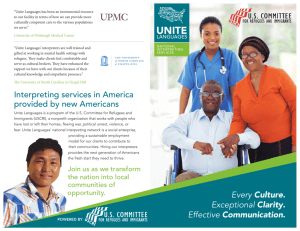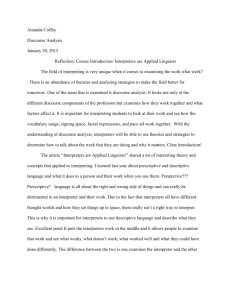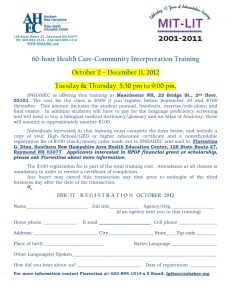INTRODUCTION , - The Community Interpreter
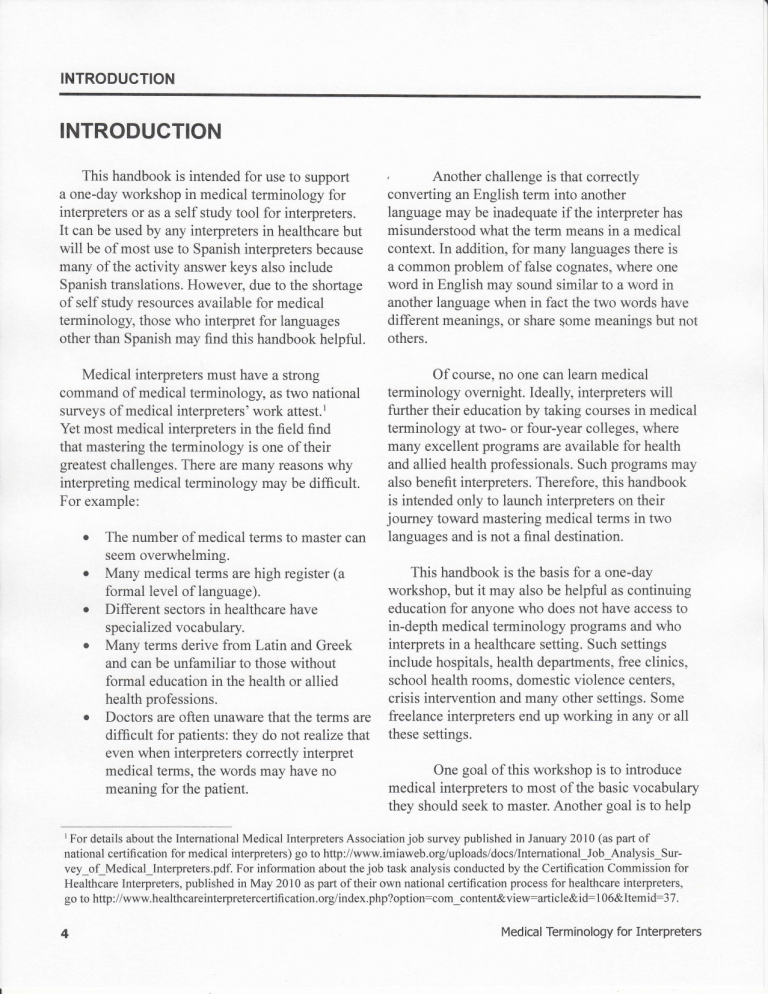
INTRODUCTION
INTRODUCTION
This handbook is intended for use to support a one-day workshop in medical terminology
for
interpreters or as a selfstudy tool
for
interpreters.
It
can be used by any interpreters in healthcare but
will
be of most use to Spanish interpreters because many of the
activity
answer keys also include
Spanish translations. However, due to the shortage
of
self study resources available for medical terminology, those who interpret
for
languages other than Spanish may find this handbook helpful.
,
Another challenge is that correctly converting an English term into another language may be inadequate
if
the interpreter has misunderstood what the term means
in
a medical context.
In
addition, for many languages there is a common problem of false cognates, where one word in English may sound similar to a word
in
another language when
in
fact the two words have different meanings, or share gome meanings but not others.
Medical interpreters must have a strong command of medical terminology, as two national surveys of medical interpreters'
work
attest. I
Yet most medical interpreters in the field
flnd
that mastering the terminology is one of their greatest challenges. There are many reasons
why
interpreting medical terminology may be
difficult.
For example: o
The number of medical terms to master can seem overwhelming.
.
Many medical terms are high register (a formal level of language).
o
Different
sectors in healthcare have specialized vocabulary.
o
Many terms derive from Latin and Greek and can be unfamiliar to those
without
formal education in the health or allied health professions.
o
Doctors are often unaware that the terms are
difficult
for patients: they do not
realizethat
even when interpreters correctly interpret medical terms, the words may have no meaning for the patient.
Of
course, no one can learn medical terminology overnight. Ideally, interpreters will further their education by taking courses in medical terminology at
two-
or four-year colleges, where many excellent programs are available for health and allied health professionals. Such programs may also benefit interpreters. Therefore, this handbook is intended only to launch interpreters on their journey toward mastering medical terms in two languages and is not a
final
destination.
This handbook is the basis
for
a one-day workshop, but
it
may also be helpful as continuing education for anyone who does not have access to in-depth medical terminology programs and who interprets in a healthcare setting. Such settings include hospitals, health departments, free clinics, school health rooms, domestic violence centers, crisis intervention and many other settings. Some freelance interpreters end up working in any or
all
these settings.
One goal of this workshop is to introduce medical interpreters to most of the basic vocabulary they should seek to master. Another goal is to help lFor details about the International Medical Interpreters Association job survey published in January 2010 (as part of national certification for medical interpreters) go to http://www.imiaweb.org/uploads/docs/Internationa[ob_Analysis_Survey_olMedical-Interpreters.pdf. For information about the job task analysis conducted by the Certification Commission for
Healthcare Interpreters, published in May 2010 as part of thefu own national certification process for healthcare interpreters, go to http://www.healthcareinterpretercertification.org/index.php?option:com*content&view:article&id:106&Itemid:37.
Medical Terminology for Interpreters
INTRODUCTION
them to develop tools and strategies to expand their medical terminology
in
specialized healthcare settings where they may interpret most often.
Whether those reading this handbook are using
it
in
a workshop, as a self study tool or by working
with
a partner or "study buddy," the
following
objectives apply.
We welcome feedback from medical interpreters and others
for
future editions of this handbook and the workshop
it
supports. Selfstudy flashcards to accompany this handbook are in development and may be available
for
sale
in
future.
If
you have other suggestions, please call or write to:
Objective
1:
Correctly
use basic medical
terms
in
two
languages.
a)
Use the meaning of LatirVGreek roots and affixes to interpret medical terminology.
b)
Demonstrate knowledge of common terms
for
body parts, body systems and diseases.
Cross-Cultural Communications
10015 Old Columbia Road, Suite B-215
Columbia,
MD
21046'
4t0-3t2-5599
ccc @cultureandlanguage.net
Objective 2:
Develop
skills
for
overcoming challenges
in
medical
terminology.
a)
Discuss basic terms for tests, procedures and symptoms.
b)
List
and compare strategies and resources
for
learning new medical terminology.
We strongly encourage anyone who purchases this book
for
self study to find another medical interpreter and to partner
with
that individual to study this handbook and complete the terminology exercises together. Most interpreters benefit greatly from the interaction, and research suggests that their emotional connection helps to enhance memory retention. (In other words, not only is
it
more fun to study
with
a partner:
it's
more effective!)
If
you are sfudying
with
a partner,
for
several exercises each of you
will
need your own copy of the handbook. Copyright law permits photocopying a few pages of this handbook
for
self study, but
it
does not permit photocopying the whole handbook.
Medical Terminology for Interpreters
5
